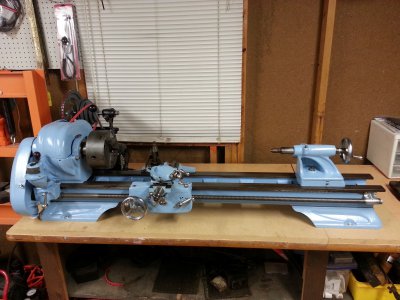it seems like there is always something we wish we could have done differently, hind sight being 20/20 and all. Do you have anything that stands out to you up to this point in the rebuild?
I just completed my TH54 a few weeks ago and I have a few observations:
1) Take LOTS of pictures before you tear anything apart. Each major piece has several sub-assemblies and putting all that stuff back together can result in a lot of head-scratching if there is more than a few days between disassembly and reassembly. Detailed pics of each assembled piece REALLY helps when you're putting it all back together. When you're on a roll tearing stuff apart, it can be really tempting not to stop and take pics along the way, especially when your hands are coated with dirt and grease, but do the best you can (get help from wife, kid, etc. if available).
2) Put a box of quart size ziploc bags and a sharpie on the bench and use them to keep track of various small parts as you take them off.
3) I had almost no rust, but TONS of caked on grease. I tried a lot of different solvents along the way (starting fluid, carb cleaner, brake cleaner, mineral spirits, engine degreaser, purple power, oven cleaner). For overall heavy degreasing, I found the oven cleaner to be the most effective and cost efficient with the least amount of work required - just have to use it in an open area because of the fumes. For lighter grease on large parts, soaking with purple power and scrubbing with a wire brush worked well. The carb and brake cleaners work great for spot cleaning in hard-to-reach areas, but I used them sparingly due to the fumes and cost. I have a small electric pressure washer which was also a life-saver for rinsing the large pieces after soaking in oven cleaner/purple power. Mineral spirits seemed to work well for soaking small parts (mainly nuts/bolts) overnight. Just fill a mason jar with mineral spirits and drop the parts in. Use a magnet for easy retrieval from the mineral spirits.
4) Take some overall before/after pics and post them when you're done so we can share your success with you.
Have fun!!!
Allen



